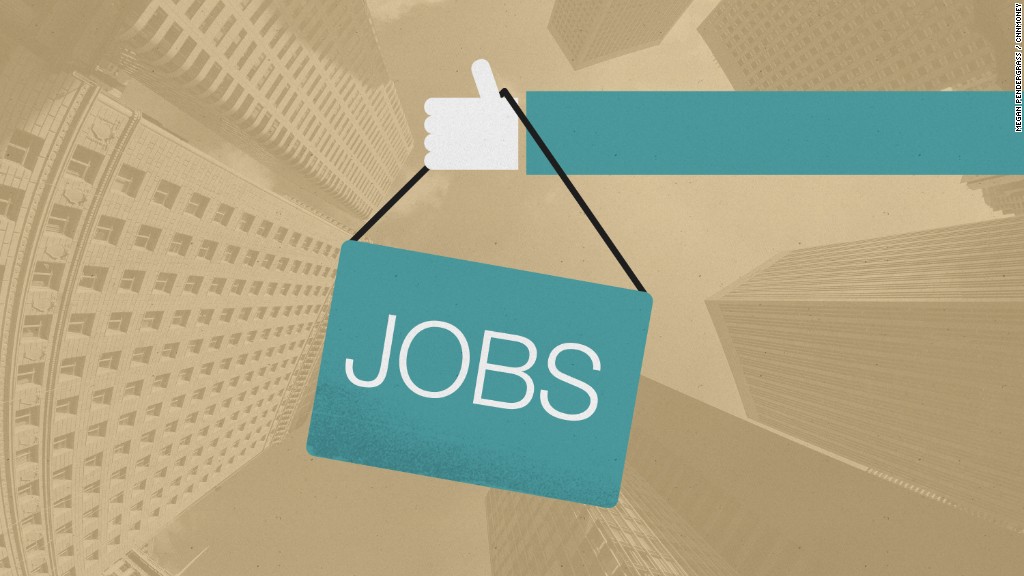
President Obama is giving President-elect Trump a welcome gift: A pretty good economy.
Unemployment is at its lowest level since 2007.
Home prices are back at all-time highs.
Growth is picking up. The economy expanded at a 3.2% annual rate from July through September.
Even the middle class is (finally) getting a raise in pay.
"President Trump really is inheriting an economy that's pretty solid," said Kevin Hassett, an economist at the conservative American Enterprise Institute, on CNBC Friday.
The "Obama economy" deserves a "B or B+" grade, says Paul Ashworth, chief economist at Capital Economics.
Related: Unemployment rate falls to 4.6%
Grading the Obama economy
That's not an A, but the economy is certainly better off than it was when Obama walked into the Oval Office in 2009. Back then, the country was in the midst of a deep financial crisis and recession. The very month Obama took office, nearly 800,000 Americans lost their jobs.
Obama believes he hasn't received enough credit for the big turnaround.
"Anyone claiming that America's economy is in decline is peddling fiction," Obama said earlier this year.
Unemployment has fallen dramatically from 10% to just 4.6% now. America has gained over 11 million new jobs since Obama took office.
Related: How good were the 10.9 million jobs created under Obama?
Trump points to those left behind in recovery
Trump has repeatedly called the unemployment rate "a joke" and "a hoax." It's unclear whether he will change that message when he takes office. Then he would be able to take credit for keeping unemployment down -- or even causing it to go lower.
For now, Trump continues to hammer the Obama economy as terrible.
"Companies are not going to leave the United States anymore without consequences," Trump said at a speech at a Carrier factory in Indianapolis, Indiana. "We're losing so much."
While hiring has picked up rapidly under President Obama -- 2014 and 2015 were the best years of job growth since the late 1990s -- the gains have almost all come in the so-called "service sector," not in manufacturing and blue collar work.
"There are some people doing fabulously well and others on death's doorstep. And there's a heck of a gulf in between," says Mark Hamrick, senior economic analyst at Bankrate.com.
The U.S. has 54,000 fewer manufacturing jobs now than a year ago, according to the Labor Department.
Trump is trying to stem that decline. He and vice President-elect Mike Pence negotiated a deal with Carrier to keep about 1,000 jobs in Indiana. Some of those jobs would have gone to Mexico.
The Obama team counters that 1,000 jobs is small compared to the 178,000 jobs added in November alone. It was the 74th consecutive month of job gains under Obama.
Related: Trumponomics suddenly gets big Wall Street thumbs up
Can Trump do better?
Trump and his new team of economic advisers promise to hypercharge U.S. growth. They say they can get it to 4% -- stronger than recent years when the economy has grown only 2%.
The question is how.
Trump wants big tax cuts for businesses and individuals. He's also planning to roll back regulation and spend more on roads and bridges.
Wall Street has given these plans a big thumbs up. The stock market rallied to record levels in November after Trump won the presidency. Business and consumer confidence has also shot up since the momentous win.
Related: Trump taps top CEOs for their views on the economy
The big problem for Trump
There's just one catch: The U.S. economy has less potential to grow now than in the past, argues economist Ashworth.
Two key factors drive growth: More people entering the workforce and workers being more productive on the job.
Right now, the U.S. has an aging population and little appetite for much more immigration, so it's hard to see more workers flooding into the workforce. Trump likes to claim 94 million Americans are out of work and need jobs, but that's not correct. That number includes retirees, people in school and those who have chosen not to work in order to take care of their family.
In reality, about 2.1 million lost their jobs in recent years and appear to have simply given up looking. They are the hidden unemployed. Getting them jobs won't be easy as many jobs today require specialized skills.
Trump's big hope is to get productivity up by encouraging businesses to invest more in their factories, research and workers. Business investment has been one of the missing parts of the recovery.
"We're not quite there yet, but we've made a considerable amount of progress," says Ashworth.


